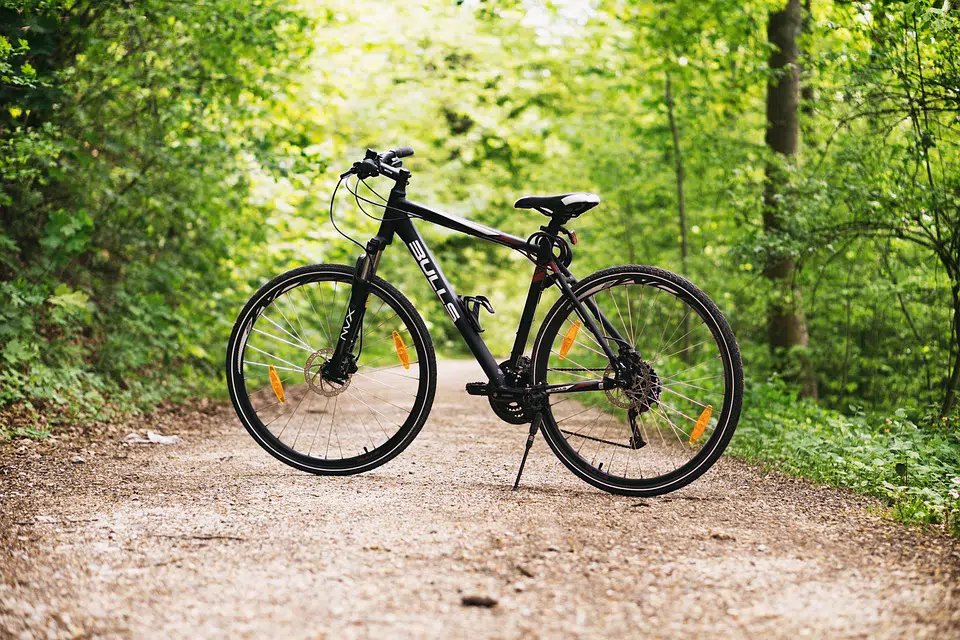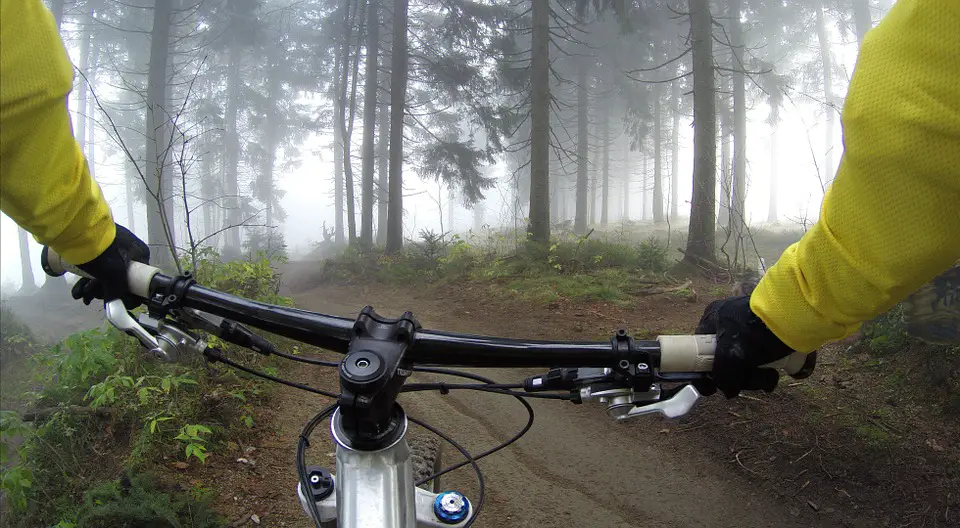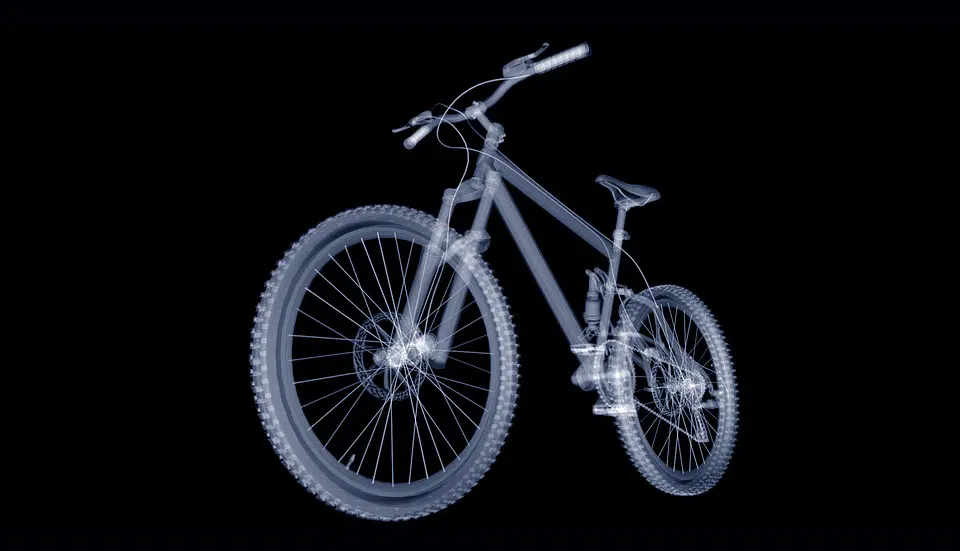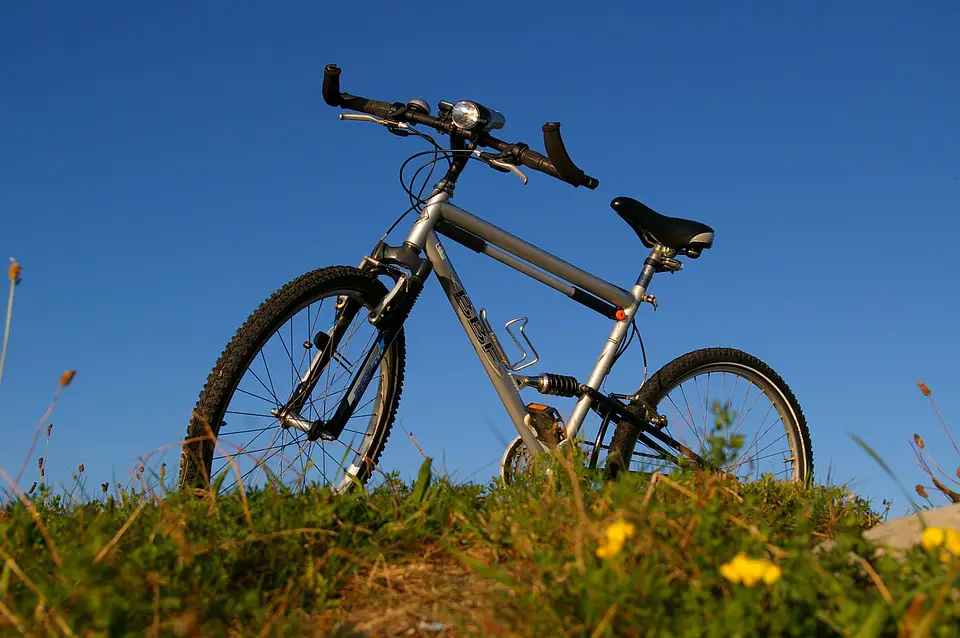How To Raise Handle Bars On Mountain Bikes
Mountain biking is a fantastic sport that allows people to get out into nature and enjoy their surroundings. It also helps build strength and endurance. However, there are some things that you should keep in mind before starting. One of these things is the height of the handlebars. If you want to ride a mountain bike, then you need to raise the handlebars. This will allow you to reach the ground while riding. Then you might be wondering how to increase the handlebars on your existing bike. In this article, I will explain how to raise handlebars on mountain bikes.
1. What Does Raising The Handlebars Mean?
Raising the handlebar means that it has been raised to use it as normal when riding. It also allows for more room in front of you and behind you. You should not have any problems with getting used to using the higher handlebars.
If you were to stand on one leg and try to ride a bicycle, you would be unable to steer the bike. You would fall over. Raising the handlebars means you lift your front wheel off the road. By doing this, you reduce the chance that you will break the handlebars.

2. So, Why Do People Raise Their Handlebars?
There are many reasons why people like to raise their handles bars. Some people just prefer having longer arms than others. Others may find themselves struggling to get into certain positions, such as sitting down or standing up from a seated position. Raising the handlebars makes everything easier for everyone involved.
Here are some common reasons:
- To gain more power and speed on hills.
- To get the bike to go faster.
- To make riding up hills simpler.
- To prevent the cycle from falling.
- To stand out.
3. How To Raise Handlebars On Mountain Bikes?
How To Raise Handle Bars On Mountain Bikes Threadless

You need to have a bike that has handlebars that are not too low off the ground. The best way to check if they are too low is by putting both hands out at shoulder level. Your elbows should touch each other. If they don't, then there's no problem. However, if they do, then you'll need to raise them.
The first step is to remove the seat post clamp. Then take the saddle away from its place. Next, loosen all the bolts holding the frame together. Finally, pull the whole thing apart. Once you've done this, you're ready to start lifting the handlebars.
Step 1 - Remove Seat Post Clamp
The first step is to remove seatpost clamps. There are two types of seatpost. Those that come attached to the frame and those that bolt onto the frame. For most bikes, the former type is what you will need to work with. Single-bolt seatpost usually require an Allen key to unscrew. Double bolt seatpost often only require a screwdriver. Either way, once the seatpost is removed, you can see where the handlebars attach to the frame.
Step 2 - Take Saddle Away From Its Place Next
Take the saddle away from where it normally sits. Now, you can see the top tube of the frame. Lift the handlebars until they are about an inch above the bottom bracket.
Step 3 - Loosen All Bolts Holding Together The Frame
Now that you know how much space you have between the handlebars and the floor, you can begin loosening the stem cap bolt holding the frame parts together.
a) First, loosen the rear axle nut.
This is located near the back end of the chainstay. After that, loosen the lower threadless headset cup nuts. These are found under the headtube. They hold the fork assembly in place.
b) Next, loosen the upper headset cups.
These are usually located towards the middle part of the head tube. When these are loose enough, you can move the forks forward slightly. Doing this helps prevent damage to the bearings inside the steerer tubes.
c) Finally, loosen the brake caliper mounting screws.
You can also loosen the brake cable housing nuts. These are located next to the brakes.
Step 4 - Pull-Apart The Whole Thing
Once you've finished loosening all the bolts, you can now pull the frame apart. It doesn't matter whether you use your fingers or pliers. Just be careful when pulling so that you don't accidentally snap any cables or wires.
Step 5 - Lifting The Handlebar
When you've pulled the frame apart far enough, you can lift the handlebars upwards. You may want to put something underneath the bar as well. A piece of wood works great. Be sure to keep the bar close to the centerline of the bike. Otherwise, you could cause problems later on.
Step 6 - Adjusting Brake Calipers And Cable Housing Nuts
After raising the bars high enough, you'll notice that the front wheel isn't quite centered over the pedals. That means that one side of the tire won't line up properly with the pedal spindle. For everything to fit correctly, you must adjust the position of the brake calipers and the cable housings.
a) Adjustment Of Front Wheel Position
To do this, simply turn each adjustment screw by hand. Make sure not to overtighten them, though. If you go too far, you might break off a portion of the threads.
b) Adjustment Of Rear Axle Nut
This is similar to adjusting the front wheel. However, instead of turning the adjustment knob, you should slide the nut along the threaded shaft. Use only moderate pressure. Too much force could strip out some of the threading.
c) Adjustment Of Lower Headset Cups
The last step involves tightening down the two lower headset cups. Once again, make sure not to overtighten them. Overtightening would result in poor performance.
How Do You Raise Handle Bars On Mountain Bikes Threaded

If your bike holds a piece of metal connecting the seatpost clamp to the top bracket, it will help if you remove it before lifting the handlebars. This way, you won't need to worry about damaging anything while trying to raise the handlebars.
Step 1: Put your foot in the pedal and push down on it.
The handlebars should be between your legs. If they are too low, you will have to lean forward or backward a bit and raise them higher than normal. This is because when riding at speed, if the bars are lower than where your feet can reach, then you'll need to use more of your upper body strength to keep from falling off. You don't want that!
Step 2: Pull up on the handlebars.
Now you should be standing between your legs and holding onto both handles of the frame. You can now pull down to raise or lower the bars. If you want a more comfortable position for riding, then stand closer together than this. The further apart you are, the easier it is to lean forward when pedaling. This will make you feel like you're leaning into the wind. However, if you have long arms, then being close together may cause problems as well.
Step 3: If the bars are too high, put them back down until they are at the right height.
You can also use a pair of pliers to bend the handlebars forward or backward if you need more clearance for your hands and arms. Just remember to hold the frame firmly while doing so. It's easy to damage the frame if you aren't careful.
Step 4: Adjust the seat so that it is comfortable.
Place your feet on either side of the frame and stand up straight, keeping both legs in a firm position. Holding onto the handlebars, slowly raise one leg at a time until you can comfortably reach around to grab the other foot. Repeat this process for each leg. When standing fully upright, make sure that your knees are bent slightly, and your hips are level.
Step 5: Adjust the saddle so that it is comfortable and centered over the pedals.
The handlebars should be at a height where your arms are straight when you're standing up, but not too high or low. If they're too low, then you'll have to bend down more often than if they were higher. You can also adjust them by moving them forward or back on their clamping mechanism. The closer together they are, the lower the bar will sit relative to your body.
Step 6: Adjust the stem so that it is comfortable for you.
If your bike has a flat top tube, then adjust the handlebars until they are at a handlebar angle of about 45 degrees to the ground. If your frame doesn't have a flat top tube, just stand on one foot and hold onto something firm like a wall or tree trunk while adjusting the bars as needed. You can also use this method if you're riding in traffic without a convenient place to stop.
Adjustable stems allow you to move the front end of the bicycle backward and forwards along its axis. They do this by allowing you to change how far away from the centerline of the wheel axle the head tube sits.
Step 7: Adjust the brakes so that they work well.
If you have a rear brake, make sure it is working properly and can stop your bike if needed. If not, replace it or get an aftermarket one. The next step in raising handlebars on mountain bikes is standing up with the frame between legs. This will allow for more stability when riding. Place both feet firmly on either side of the seat tube.
Step 8: Adjust the gears so that they work well and are easy to use.
The rear derailleur should be positioned in a way where it is not too far from your body but still close enough for you to reach easily when pedaling or standing up on the bike. The front derailleur can also be adjusted similarly. If there's no room between your legs and the bicycle's frame, then move the seat forward until there's some space. This will make sure that you have good control over both brakes while riding.
Step 9: Adjust the chain tension so that it works well and is easy to use.
The rear derailleur should be set up for a smaller sprocket, usually 11 or 12 teeth. The front derailleur will work fine on any of these sizes. If you are using an indexed shifter, make sure your indexing button is in its correct position.
If you have a freewheel, remove it first if possible. You can always put one back later.
How To Find The Perfect Handlebar Adjustment

Step 1 - Alignment
When adjusting the handlebar height of your handlebars, make sure that the centerline of the threadless stem is aligned with the middle of the seat tube. This ensures that the handlebars remain centered throughout all different types of riding conditions.
Adjusting the height of your handlebar stem requires some trial and error. Start by setting the handlebars about half an inch above where they normally sit. Once you feel comfortable with this adjustment, increase the distance slightly. Stem height adjustments may require several tries before getting them right. It takes practice to learn what feels best for you.
Step 2 - Centerpiece
Centerpieces are used to ensure proper alignment of the handlebars. They should always be placed directly over the center of the headtube. In most cases, the centerpiece will be attached to the steerer tube via a threaded headset. It's important to note that these collars do not need to be tightened very tightly; however, they should never loosen during use.
Step 3 - Standing with the Frame Between Legs
The perfect handlebar height for your mountain bike is based entirely on the individual. Some riders prefer more upright positions while others like their handlebars higher up. When standing next to your bicycle, look down at the ground between your legs. You want to see approximately halfway between your knees and ankles.
If you don't see anything there, adjust the position accordingly. Remember that this isn't something that needs to be done frequently since it only takes seconds to change.
FAQS
How high should my handlebars go?
The answer to this question depends entirely upon what type of terrain you plan to ride on. For example, if you live near an area with lots of rocks, you probably don't want to raise your handlebars too much. However, if you live somewhere with no rocks, you could easily raise your handlebars quite far.
Can I lower my handlebars after buying them?
Yes! There are several ways to adjust the length of your handlebars. One way is to simply loosen the bolts holding the stem together. Another method involves removing the entire stem assembly and replacing it with another set that has different lengths.
Is it safe to raise my handlebars?
Raising your handlebars isn't dangerous as long as you follow certain safety precautions:
- Always wear protective clothing when riding in case something happens.
- Never try to lift more than one bike at once.
- Use proper tools such as pliers instead of using your hands.
- Keep track of how many pounds you lift so that you can avoid injuring yourself.
- Should you use spacers to raise mountain bike handlebars or not?
Spacers aren't necessary for raising your handlebars. They may even make things worse since they tend to move around a lot while you're riding. You might also find that some bikes come equipped with spacers already installed. This means that you shouldn't need any additional ones.
How to adjust threaded headset stem
Threaded headsets have two parts: The top part goes into the bike frame, and the bottom attaches to the fork. If you're adjusting the length of your stems, first remove the bolt from the crown. Then slide the crown off the base until it clicks into place. Once everything is back in its original spot, tighten the bolt adjustment again.
Conclusion
The handlebars are significant for the safety of the rider. They help protect against falls and other accidents. Raising your handlebars will allow you to have better control over your bike. It's recommended that you research before purchasing handlebars online. If you choose poorly, you'll end up regretting it later.
They should be strong enough to support the weight of the rider. Also, they should fit well without being loose or tight. Lastly, they should look good and match the rest of your bicycle.
That's How To Raise HandleBars On Your Bike!
If you enjoyed reading this article, please share it with your friends using the social media buttons below... Also, if there is anything else we didn't cover here, feel free to ask us questions in our comments section!
